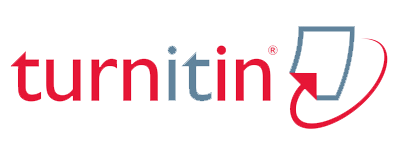Model-Data Fit using Akaike Information Criterion (AIC), Bayesian Information Criterion (BIC), and The Sample-Size-Adjusted BIC
DOI:
https://doi.org/10.21580/square.2022.4.1.11297Abstract
The study determined if the 1PL, 2PL, 3PL and 4PL item response theory models best fit the data from the 2016 NECO Mathematics objective tests. Ex-post facto design was adopted for the study. The population for the study comprised 1,022,474 candidates who enrolled and sat for June/July SSCE 2016 NECO Mathematics Examination. The sample comprised 276,338 candidates who sat for the examination in three purposively Geo political zones in Nigeria (i.e., S/West, S/East and N/West). The research instruments used for the study were Optical Marks Record Sheets for the National Examination Council (NECO) June/July 2016 SSCE Mathematics objectives items. The responses of the tests were scored dichotomously. Data collected were analyzed using 2loglikelihood chi-square. The results of the likelihood ratio test revealed that 2PL fitted the data better than 1PL was statistically significant (χ2 (59) = 820636.1, p < 0.05); the 2PL model fitted the data better than the 1PL model; 3PL model fitted the data better than the 2PL model and the result showed that the 4PL model fitted the data better than the 3PL model and the Likelihood ratio test that 4PL model fitted the data better than 3PL model was statistically significant, (χ2(60)=216159.2, p<0.05). The study concluded that four-parameter logistic model fitted the 2016 NECO Mathematics test items.
Keywords: Akaike Information Criterion (AIC), Bayesian Information Criterion (BIC), one parameter model, two parameter model, three parameter model, four parameter model.
Downloads
References
Akaike, H. (1977). On entropy maximization principle. In P. R. Krishnaiah (Ed.), Applications of statistics (pp. 27−41). Amsterdam: North Holland.
Baker, F. B. (1992). Item response theory: Parameter estimation techniques. New York: Marcel Dekker.
Edelen, M. O., & Reeve, B. B. (2007). Applying item response theory (IRT) modeling to questionnaire development, evaluation, and refinement. Qual Life Res 16(1) 5–18.
Eluwa, I., Eluwa, A., & Abang, B. (2011). Evaluation of Mathematics Achievement Test: A comparison between classical test theory (CTT) and Item Response Theory (IRT). Proceedings of the 2011 International Conference on Teaching, Learning, and Chance. International Association for Teaching and Learning (IATEL).
Finch. W. H., & French, B. F. (2015). The impact of group pseudo-guessing parameter differences on the detection of uniform and non-uniform DIF. Psychological Test and Assessment Modeling, 56(3), 25-44.
Garcia-Pérez, M. A., & Frary, R. B. (1991). Finite state polynomic item characteristic curves. British Journal of Mathematical and Statistical Psychology, 44,45−73.
De Ayala, R. J. (2009). The theory and practice of item response theory. New York: The Guilford Press.
Dinero, T. E., & Haertel, E. (1977). Applicability of the Rasch model with varying item discriminations. Applied Psychological Measurement, 1, 581–592.
Forsyth, R., Saisangjan, U., & Gilmer, J. (1981). Some empirical results related to the robustness of the Rasch model. Applied Psychological Measurement, 5, 175–186.
Harris, D. (1989). Comparison of 1, 2, 3 parameter IRT models America college testing. Program, NCME Instructional Model, POB 168, IOWA City, IA 52243.
Levine, M. V., Drasgow, F., Williams, B., Mccusker, C., & Thomasson, G. L. (1992). Measuring the difference between two models. Applied Psychological Measurement, 16,261−278.
Lord, F. M., & Novick, M. R. (1968). Statistical theories of mental test scores. Reading, MA: AddisonWesley.
Mokobi, T., & Adedoyin, O. O., (2014). Identifying location biased items in the 2010 Botswana junior certificate examination Mathematics paper one using the item response characteristics curves.
Oguoma, C. C., Metibemu, M. A., & Okoye, R. (2016). An assessment of the dimensionality of 2014 West African Secondary School Certificate Examination mathematics objective test scores in Imo State, Nigeria. African Journal of theory and Practice of Educational Assessment, 4(2), 43-45.
Ojerinde, D. (2013). Introduction to item response theory, parameter models, estimation and application. Abuja, Nigeria: Marvellous Press.
Ojerinde, D., Popoola, O., & Oyenneho, P. (2012). Introduction to item response theory: parameter models, estimation and application. Goshen Print Media Ltd.
Orlando, M., & Thissen, D. (2000). Likelihood-based item-fit indices for dichotomous item response theory models. Applied Psychological Measurement, 24, 50–64.
Sclove, S. L. (1987). Application of model-selection criteria to some problems in multivariate analysis. Psychometrika, 52, 333–343
Wainer, H., & Wright, B. D. (1980). Robust estimation of ability in the Rasch model. Psychometrika, 45, 373–391.
Wilson, M. (1992). The ordered partition model: An extension of the partial credit model. Applied Psychological Measurement, 16, 309.
Yen, W. M. (1981). Using simulation results to choose a latent trait model. Applied Psychological Measurement, 5, 245–262.
Downloads
Published
Issue
Section
License
The Authors submitting a manuscript do so on the understanding that if accepted for publication, copyright of the article shall be assigned to Square: Journal of Mathematics and Mathematics Education as the publisher of the journal. The copyright form should be signed originally and send to the Editorial Office in the form of original mail, scanned document to [email protected]
Square : Journal of Mathematics and Mathematics Education by Mathematics Department UIN Walisongo Semarang is licensed under a Creative Commons Attribution-ShareAlike 4.0 International License.





























